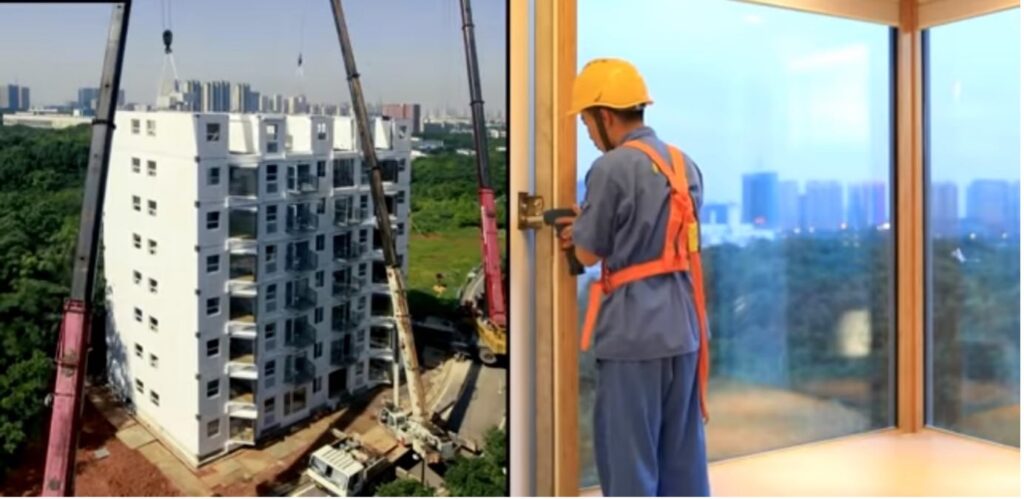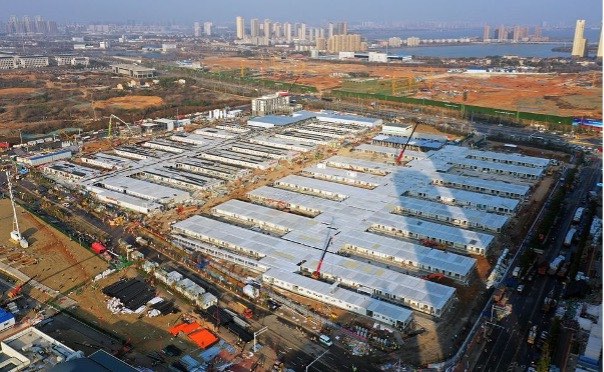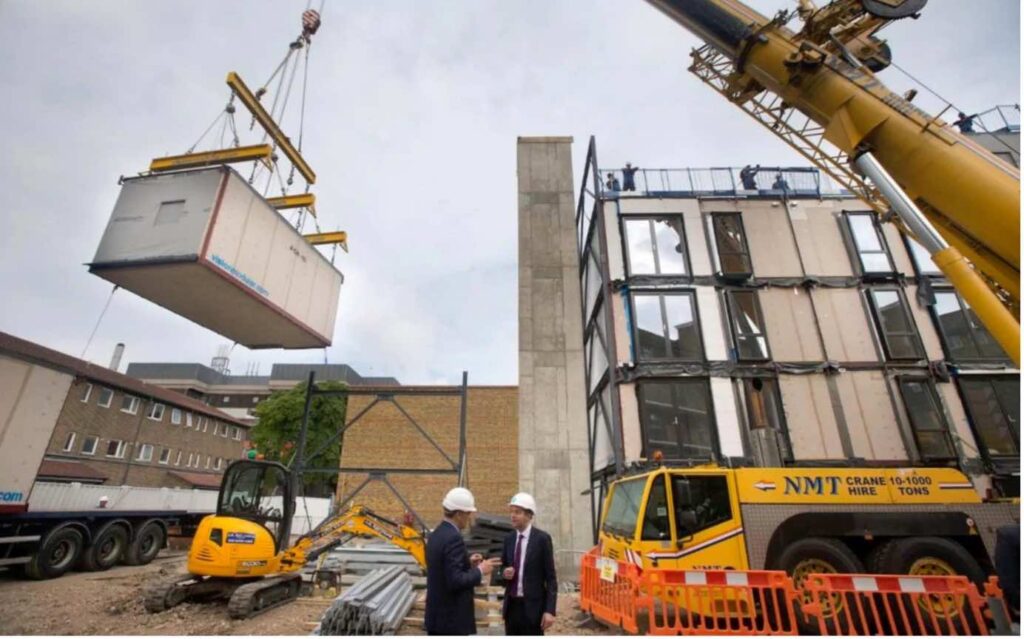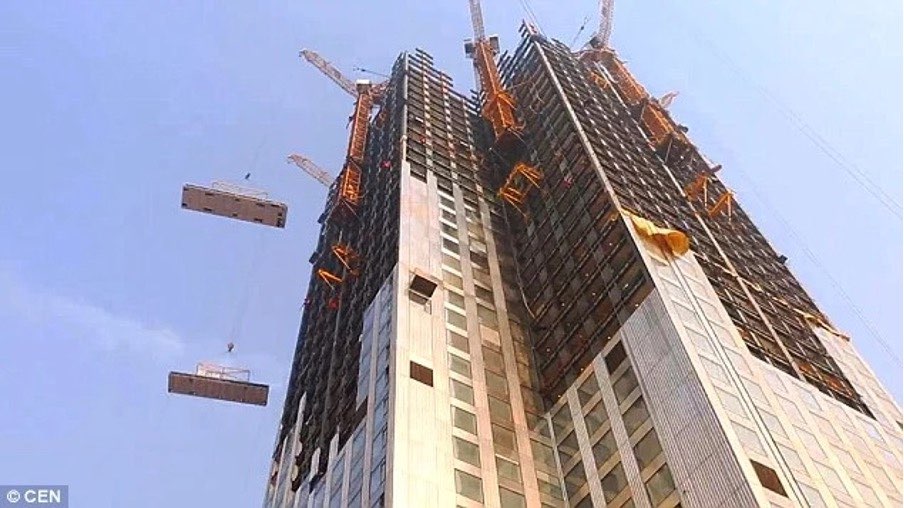Being the most populated country in the world, China has evolved to take care of its enormous population needs, leading to innovations in different sectors, most significantly in architecture and construction. Its architectural heritage, rich in both traditional influences and ultramodern innovation, is reflected in its highly ambitious undertakings in the past few years. A testament to this lies in the growing relevance of modular structures. This trend carries architectural significance, as it offers sapience into the profitability of these ventures, and provides a glimpse into the future of China’s civic aspirations.

Context and Architecture
Historically, Chinese architecture has been characterized by rigidity and effectiveness. The origins of modular structures can be traced back to these principles. From the uniformity seen in the ornate classes of traditional roofs to the repeated patterns of ‘Siheyuan’ yard houses, the principle of modularity has been a constant feature in its buildings. This principle has evolved over centuries, culminating in the modern practice of modular construction. Modular structures are composed of separate sections or modules, constructed offsite in factories. Upon completion, these modules are transported to the site, where they’re assembled to form the final structure. This method has proven to be especially useful amidst rapid-fire urbanization and the associated real estate boom in China’s metropolises like Beijing, Shanghai, and Shenzhen. By allowing for faster construction and effective use of coffers, modular structures prove to be more efficient.
Economic Policy
The popularity of modular structures aligns nearly with China’s profitability policy. The nation’s policy frame places heavy emphasis on effectiveness, invention, and the creation of domestic diligence. Modular structures are in sync with these goals by furnishing an effective, innovative system of construction. An example of its alignment is the “Made in China 2025” program. Launched with the goal to transform China from a labour- intensive economy to an innovation- driven one, this policy focuses on advancing technology, with construction assiduity being a crucial area of interest. The growth of the modular structure sector supports this policy by stimulating a variety of affiliated domestic interests, including construction accoutrements, transport, and plant robotization. therefore, the rise of modular construction has several benefits as it helps meet China’s civic casing demands while also incubating the nation’s broader profitability strategy.
Significance and Glory
Modular structures in China represent more than just a construction fashion. They carry a part of the nation’s architectural memory, signifying China’s previous innovative capacity in antiquity. Likewise, they play a vital part in response to the pressing challenges of urbanization. The Chinese government’s focus on balancing profitable growth with environmental sustainability is embodied in the concept of modular structures. They offer an effective result for rapid-fire, yet sustainable civic development. The glory of this approach lies in its capability to combine ancient traditions with modern technology, showcasing China’s commitment to a sustainable future.
The Scale of China's Modular Building Sector
China’s modular building sector has been growing rapidly in recent years, driven largely by an increase in demand in urban housing. With major cities like Beijing, Shanghai, and Shenzhen experiencing significant population growth, the demand for efficient and cost-effective construction methods has fuelled the growth of modular construction.
China’s modular building market was valued at USD 18.6 billion in 2021 and is expected to reach USD 27.7 billion by 2025, growing at a compound annual growth rate of over 8% during the forecast period 2021-2025. These figures highlight the scale and potential of the industry.
Disaster Relief
One noteworthy aspect of modular construction in China is its critical role in disaster relief. The most striking example of this was during the early stages of the COVID-19 pandemic when China constructed two modular hospitals in Wuhan, Huoshenshan and Leishenshan, in just over a week, demonstrating the speed and efficiency of modular construction.

Environmental Impact
Modular buildings in China are not only rapid and cost-effective but also environmentally friendly. They generate far less construction waste compared to traditional construction methods and are more energy-efficient, both during construction and during the building’s life cycle, thus aligning with China’s increasing emphasis on green and sustainable practices.
Problems and Disadvantages
Despite the benefits and the promising future, the modular construction sector in China also faces several challenges. Issues related to quality control, logistical difficulties associated with module transportation, and the societal taboos against modular structures are significant hurdles. Addressing these challenges requires clear regulations and norms, pressing the need for government intervention in this sector. Maintaining the balance between encouraging invention and assuring the quality and safety of modular structures is pivotal for the long- term success and proliferation of such structures

What Next?
Looking towards the future, with technological advancements and a renewed focus on sustainability, the prospect for China’s modular structures seems to be bright. As the Chinese government continues to upgrade its programs that contribute to innovation and sustainable growth, the modular construction sector plays a central part in this process. Likewise, with the growing acceptance and adoption of sustainable practices, it’s likely that Chinese people will embrace modular construction in the future. This trend will not only contribute to the reduction of the construction industry’s environmental impact but will also present opportunities for China to establish itself as a global leader in sustainable construction practices.
Conclusion
China’s modular structures will contribute significantly to sustainability efforts while also emblematizing the country’s innovative spirit. As China continues to evolve its public policy and navigates the challenges of rapid-fire urbanization, the growth and development of diligence like modular construction will really play a crucial part. By fostering similar sectors, China is shaping its civic geographies of the future while upholding its commitment to sustainable development and innovation.
Written by – Lucksh Mota
Edited by – Alan Joseph Benny




